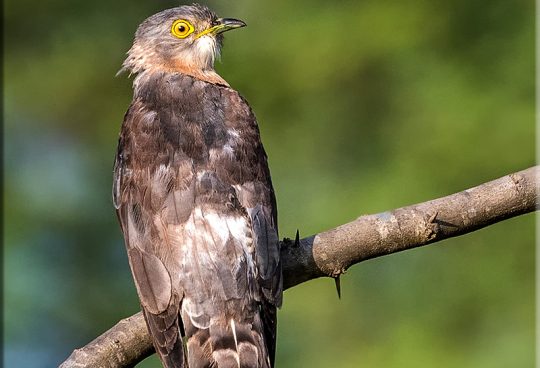The white-crested laughingthrush (Garrulax leucolophus) is a member of the family Leiothrichidae. It is a highly social and vocal bird found in forest and scrub from the Himalayan foothills to Southeast Asia. The white-crested laughingthrush is a member of the family Leiothrichidae, recently split from the Old Word babbler family, Timaliidae. Its scientific name Garrulax leucolophus comes from Latin garrire “to chatter”, in reference to its very vocal nature, and from Greek leukós “white” and lophos “crest”. Like other birds in its genus, G. leucolophus has a stocky build, with strong blackish legs and bill, rounded tail, and voluminous plumage. Its body length averages 30 cm, and its tail ranges from 13 to 15 cm. It is named after its characteristic white hood and raised crest. It is also easily recognizable due to its broad and elongated black eye-mask. The mantle, back and underparts from the lower breast down are rufescent, contrasting with the white head, throat and upper chest and fading into darker olive-brown on the tail and upper wings. The nape is light gray.
Similarly to other laughingthrushes, G. leucolophus is omnivorous and opportunistic. It subsists mostly on invertebrates such as beetles, spiders, flies, mealworms and caterpillars, snails and leeches. However, it also eats fruits, seeds, nectar, and even small reptiles and amphibians (snakes, lizards and frogs). In Singapore, observers have noticed individuals picking at human food and garbage. One witness even reported birds soliciting humans for scraps.
Not globally threatened. Generally common. Common and widespread in Nepal. In Bhutan abundant in the Sunkosh, C & E valleys, and in foothills. It is classified as least concern by IUCN.
![]()






Sorry, the comment form is closed at this time.